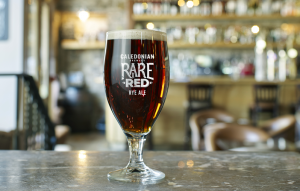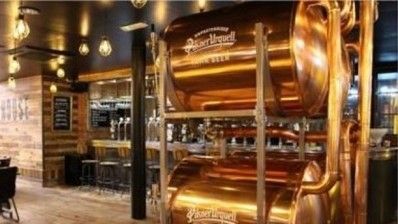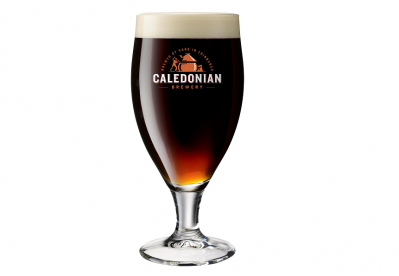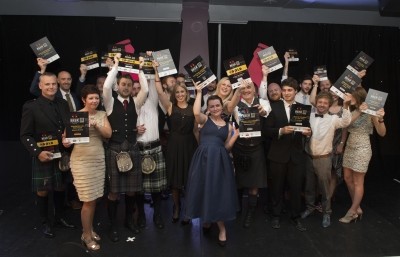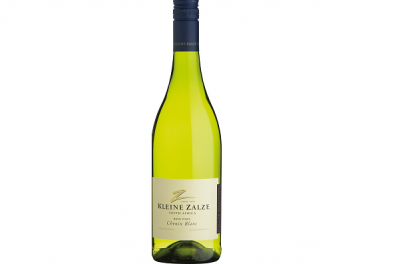Beer
Big brewers, good or bad?
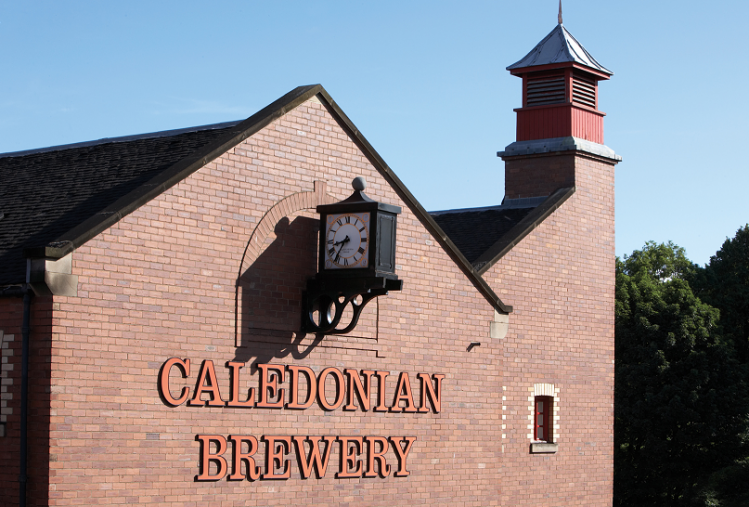
Big breweries aren’t always the demons the bemoaning ‘purists’ make them out to be, accused of tarnishing our nation’s beautiful drink. They can, it appears, be quite the opposite.
Still flying high:
Watch this video to hear Caledonian's managing director Andy Maddock talk Wee George, Deuchars and the future of Edinburgh's 150-year-old brewery CLICK HERE
That’s not to say the purists don’t have a point, because they do. UK drinkers deserve the best beer but, at the end of the day, we all just want great-tasting liquids that keep the customers coming back, because they know their last pint will taste as good as the first.
As a matter of fact, when Heineken acquired the Caledonian Brewery in its buyout of Scottish & Newcastle, the Edinburgh-based 150-year-old brewer was given the strength – through cash injections and wider sourcing powers – to excel at producing innovative beer. While the site is owned by Heineken, it still operates as a relatively independent business, one that can take advantage of some heavy capital. As a result, its production process is close, if not the same, to what it was on day one of its existence.
A prime example of Caledonian’s ability to capitalise on Heineken’s deep pockets is with its young pilot brewery Wee George, named after one of the brewery’s founders George Lorimer. This piece of kit is just over one-year-old now and replicates the same production process as the main brewery, but on a much smaller scale. So far, and despite being so young, Wee George has done some big things.
Long before the birth of Wee George, though, and prior to the Heineken acquisition, the business endured deaths, multiple buyouts and several fires in its chequered past, explains marketing manager Andy Mitchell.
“The brewery was founded in 1869 by Lorimer and Clark and, years later, became a member of the Vaux Group, based in Sunderland,” he explains. “It almost closed when Vaux offloaded it, but was saved by Edinburgh Brewing Company co-founder Russell Sharp, before Scottish & Newcastle took a majority share in the business.”
Scottish & Newcastle, however, was bought out by Heineken in 2008 shortly after it took ownership of the Caledonian Brewery, which managing director Andy Maddock highlights as a turning point for the business since it resulted in the support needed to move the brewery’s beer offer on.
Midst of the buyouts
In the midst of the buyouts, two serious fires destroyed integral parts of the business, including one in 1994 that gutted the mill house and a second in the brew house in 1998.
Moving swiftly back to the future, the £180,000 pilot brewery Wee George has so far produced top craft beers including Coast to Coast, Rare Red, Three Hop and the newly launched black lager Dark Light.
“Just under two years ago, we decided we needed to innovate and fast track some new beers on to the market,” says Mitchell. “We have built Wee George to mimic the main brewhouse: we have a water tank, a mash tun, a copper with a heating element at the bottom to replicate our traditional fire-powered coppers and a hop back, as well as four maturation vessels.”
Each of Caledonian’s four ‘modern craft beers’ were all founded in Wee George, which has a 200-litre capacity. Yet, interestingly, they weren’t supposed to go into permanent production, instead it was planned to release the brews as limited-editions.
Mitchell continues: “From the idea to being finished, Coast to Coast (4.6% ABV), an American-inspired beer, took eight weeks and two tries, whereas Rare Red (4.3% ABV) was almost perfect after the first go.
“It usually takes three brews in a pilot brewery to get the finished product you want, but we haven’t really got to that stage on any of our craft range yet.”
The hops used in all of Caledonian’s beers are fresh and vacuum-packed, rather than dry stored and have an oily quality to them, which gives the beers an intense flavour, he adds. As a result of their freshness, fewer are needed in each brew, but this isn’t a money-saving exercise Mitchell maintains.
“Our hops are expensive but the quality [of beer] we achieve is worth it, and because they are fresher it means we get much more flavour from them. Also, to get more flavour into the beers, we add a further traditional process into the mix called hop backing, which is where you filter the beer through a bed of hops. This also adds extra body.”
Flavour is a big focus in all of Caledonian’s beers, but as the brewery’s beer manager Craig Steven explains, Three Hop was given extra attention. As its name suggests, three hops are used to make the 4.5% ABV pilsner-style brew. Floral and fruity notes come from the Hallertau Hersbrucker hops, Spicy Saaz impart a mild earthy tone and Strisselspalt completes the trio with hints of honey and mint.
“Our key inspiration in what we’re doing with Wee George is the pub,” says Steven. “It’s no good us producing beers that aren’t going to sell because the demand isn’t there from the customers. Pubs are asking for something different from cask ales to rotate and this trend is something that’s growing.”
‘Market moving quickly’
He adds: “The market is moving quickly and we needed to get great-tasting beers out there as soon as possible to cater for that demand and the pilot brewery helps us to do that. We couldn’t do this sort of thing in the main brewery because you just don’t know what the end result will be. The worst thing that can happen in Wee George is we have to tip 200 litres of beer down the drain and start again.”
Although it’s not a common occurrence, he admits, mistakes have happened as Steven describes the great bad idea the brew team had when it decided to produce a mint chocolate chip beer, which only made it as far as the sewers. “The idea was great,” he insists. “But it just didn’t work. The flavours were all wrong and it wouldn’t have gone down well with drinkers at all.”
One of the most recent success stories to come out of Wee George is the black lager Dark Light, which is described as the origin of lagers because lager was traditionally black when first brewed by the Germans hundreds of years ago.
Being the first person outside of the Caledonian team to try the brew, I can report it is light, nutty and satisfying. You’re greeted with a gentle lager hoppyness on the nose, which has minute hints of chocolate. From the first sip, the toasted malt comes through, which then smooths out into a well-rounded lager with depth and personality.
Beer manager
Craig Stevens:
"Dark Light was inspired by the German Christmas markets last year, because it’s very autumnal. There aren’t many, if any, breweries launching black lagers and this is a very different way of drinking lager"
“Drinkers want something different,” says Steven. “Dark Light was inspired by the German Christmas markets last year, because it’s very autumnal. There aren’t many, if any, breweries launching black lagers and this is a very different way of drinking lager.”
Not only do customers want a beer that’s full of flavour, they want something with an ABV that’s not going to blow their socks off, he maintains, which is why Dark Light is just 4.7% ABV.
As far as other new brews from Caledonian go, Maddock makes it clear there are more to come. And with a cheeky glint in his eye, refuses to give away any more details, but says new beers from the brew house will be just as exciting as the black lager.
It’s fair to say Edinburgh’s historic brewery has been given a new lease of life following investment from Heineken. It’s bewildering to think the brewery could have closed, leaving its modern craft range potentially non-existent. Perhaps being big isn’t always that bad.
